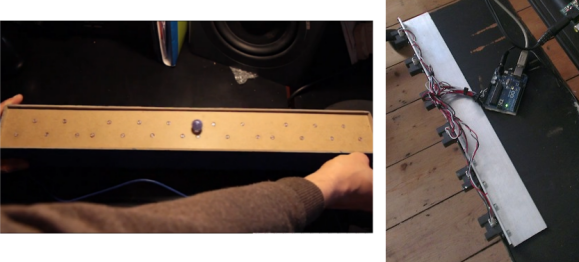
This pair of musical keyboard hacks both use light to detect inputs. The pair of tips came in on the same day, which sparks talk of consipiracy theory here at Hackaday. Something in the weather must influence what types of projects people take on because we frequently see trends like this one. Video of both projects is embedded after the jump.
On the left is a light-sensitive keyboard which [Kaziem] is showing off. In this image he’s rolling a marble around on the surface. As it passes over the Cadmium Sulfide sensors (which are arranged in the pattern of white and black keys from a piano keyboard) the instrument plays pitches based on the changing light levels. [Thanks Michael via Make]
To the right is [Lex’s] proximity sensor keyboard. It uses a half-dozen Infrared proximity sensor which pick up reflected light. He calls it a ‘quantised theremin’ and after seeing it in action we understand why. The overclocked Raspberry Pi playing the tones reacts differently based on distance from the keyboard itself, and hand alignment with the different sensors.















I had to cut at the hum from the desk lamp. This could be interesting (with marble) if the 24 sensors had been set out in a cycle of fifths or anything (round) other the conventional key layout. Or get 24 lasers or pin spots and line em up for an air harp. The playing at the beginning is fouled up, it’s unplayable as is.
2nd video, crotch shot fail! One second at end tells something, but I can’t tell what. The tune is automated, not played.
Not automated, quantised, IE you can only play notes if they are in time or in tune.